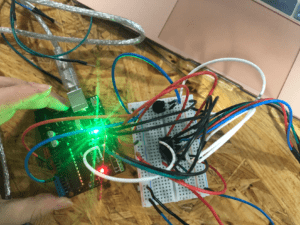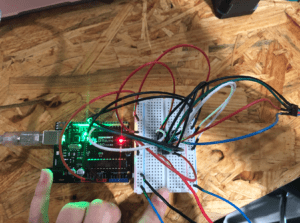- What kind of machines would you be interested in building? Add a reflection about the use of actuators, the digital manipulation of art, and the creative process to your blog post.
After building the circuits and add potentiometer for the drawing machine, I think I now have a clear understanding of how to use potentiometer. In order to include the uses of a potentiometer, I would like to build a machine that needs back and forth rotations with artificial manipulations. A project that requires that kinds of functions would be the project that I am currently working on—a music box that allows the player to manipulate it by twisting the potentiometer in whatever he prefers. An actuator is a device that can convert energy into motion. It can be used in devices like motors, switches, pumps, and valves. The digital manipulation of art means converting art into a form that could be manipulated digitally. For example, in the project that I am currently working on, we are trying to change the traditional and boring piano practices into something that could catch children’s attentions. If they twist the potentiometer in a way, then the music would play. If they twist it in a different way, then another music would play.
- Choose an art installation mentioned in the reading ART + Science NOW, Stephen Wilson (Kinetics chapter). Post your thoughts about it and make a comparison with the work you did during this recitation. How do you think that the artist selected those specific actuators for his project?
After reading through the brief explanations of those artworks, I really like the goal that “Time’s Up” is promoting in the project. The artists for “Time’s Up” are trying to raise people’s awareness about their dependence on the natural environment. Thus those people can also realize how important it is to be environmental friendly in their daily lives. In “Time’s Up”, the participants need to be fully involved with the project. They have to stand on the platform then they would be able to bend the gravity map. However, in the Drawing Machine exercise I did during this recitation, participants are less involved in the process. The only thing they would need to do is twisting the potentiometer. Since the artwork allows the participants to rotate on the platform, so I think they have chosen an actuator that allows movements and rotations. They might have chosen servo or potentiometer. Either one might work in this case.



